

Aaron Ryan proudly stands on Māngere Bridge in support of the nationwide Toitū Te Tiriti protest.
Photo/PMN News/Atutahi Potaka-Dewes
Tagata Moana stand with Tangata Whenua in nationwide 'call to action'
Large numbers of Pacific people have taken part in the Toitū Te Tiriti march, organised in reaction to government plans to change how Te Tiriti is applied.


US warns Fiji over human trafficking concerns linked to Grace Road Group

‘A man so full of love’: Fepulea’i awarded comedy Topp Prize
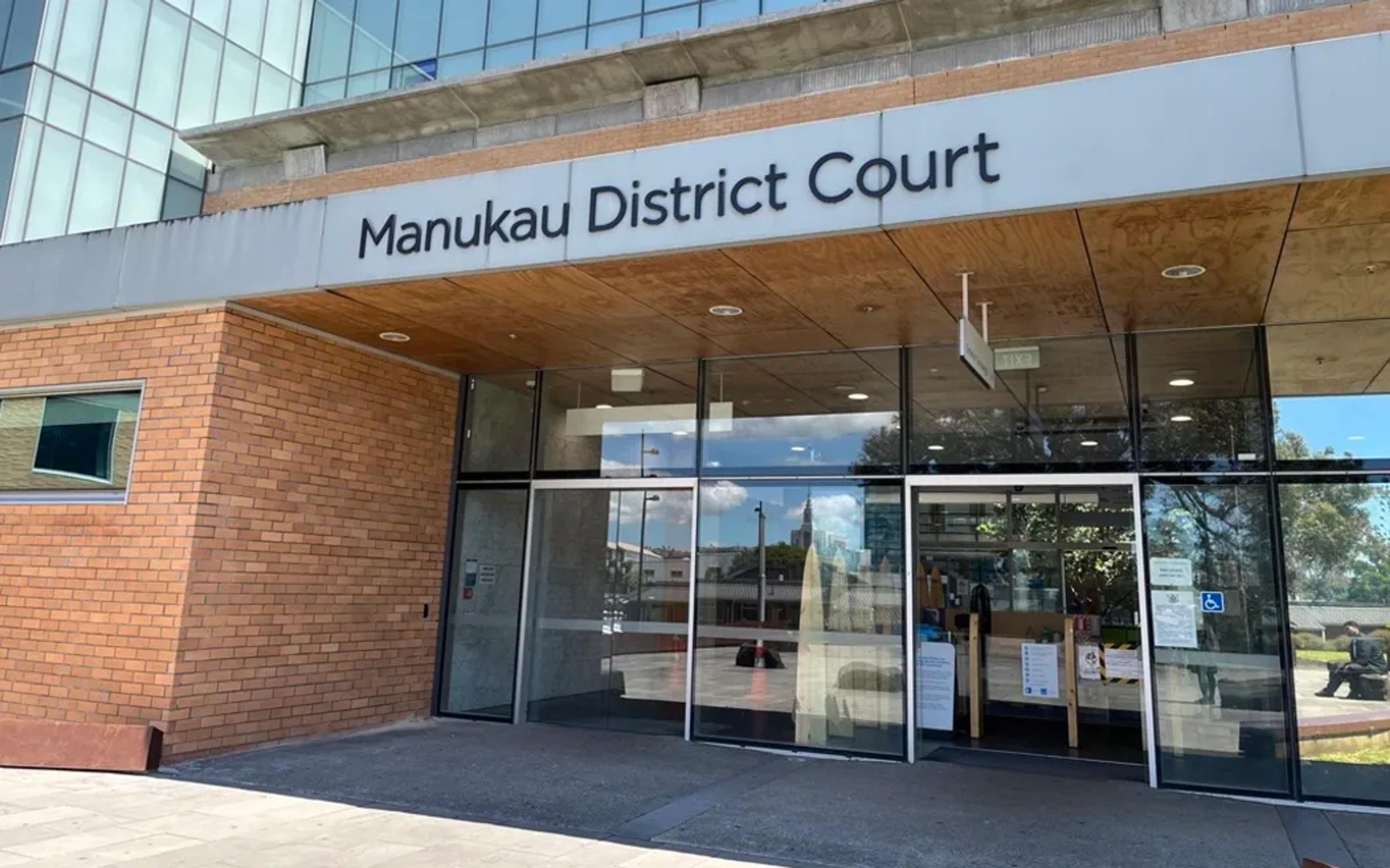

Black Caps legend joins global fight against gender violence

US warns Fiji over human trafficking concerns linked to Grace Road Group

‘A man so full of love’: Fepulea’i awarded comedy Topp Prize

"At the end of the day we are guests on this land .... [so] whatever Māori want I want as well."
Those were the words of first time protestor, Aaron Ryan (Safotu/Vailima - Samoa) who joined thousands across Te Ika-a-Māui (North Island) in support of the Toitū Te Tiriti marches.
Gridlocking main highways and disrupting traffic flows, the efforts are what Te Pāti Māori is calling "phase one" of what's to follow in the next three years if the coalition government doesn't redirect its proposed plans regarding te reo Māori and Te Tiriti o Waitangi.
Ryan says attending the activation in Māngere felt like he was a part of something bigger than himself.
"It felt cool to push against a system that's been against us the last few hundred years and unfortunately this coalition government feels like we're taking a step back fifty years."
Ryan works as the Pacific reporter for Whakaata Māori and when news of the marches spread, he grabbed his Samoa flag and headed to Māngere Bridge.

Māngere locals in good spirits on the overpass. Photo/PMN News/Atutahi Potaka-Dewes
He says since being immersed with Māori colleagues, friends and flatmates, he has a wider understanding of both Māori issues and culture and it has influenced his hunger for indigenous measina Samoa (cultural treasures).
"I've been surrounded by Māori these last two years and I've come to realise the amount of indigenous knowledge they know compared to the westernised knowledge we Samoans follow. It's made me want to dig deeper into my culture, and that's what I was standing for today.
"I've realised my way of life has improved because I have two perspectives. Samoans fly flags for a totally different reason and it was heart-warming to see smiles on faces of those who were protesting against something that actually is quite awful."
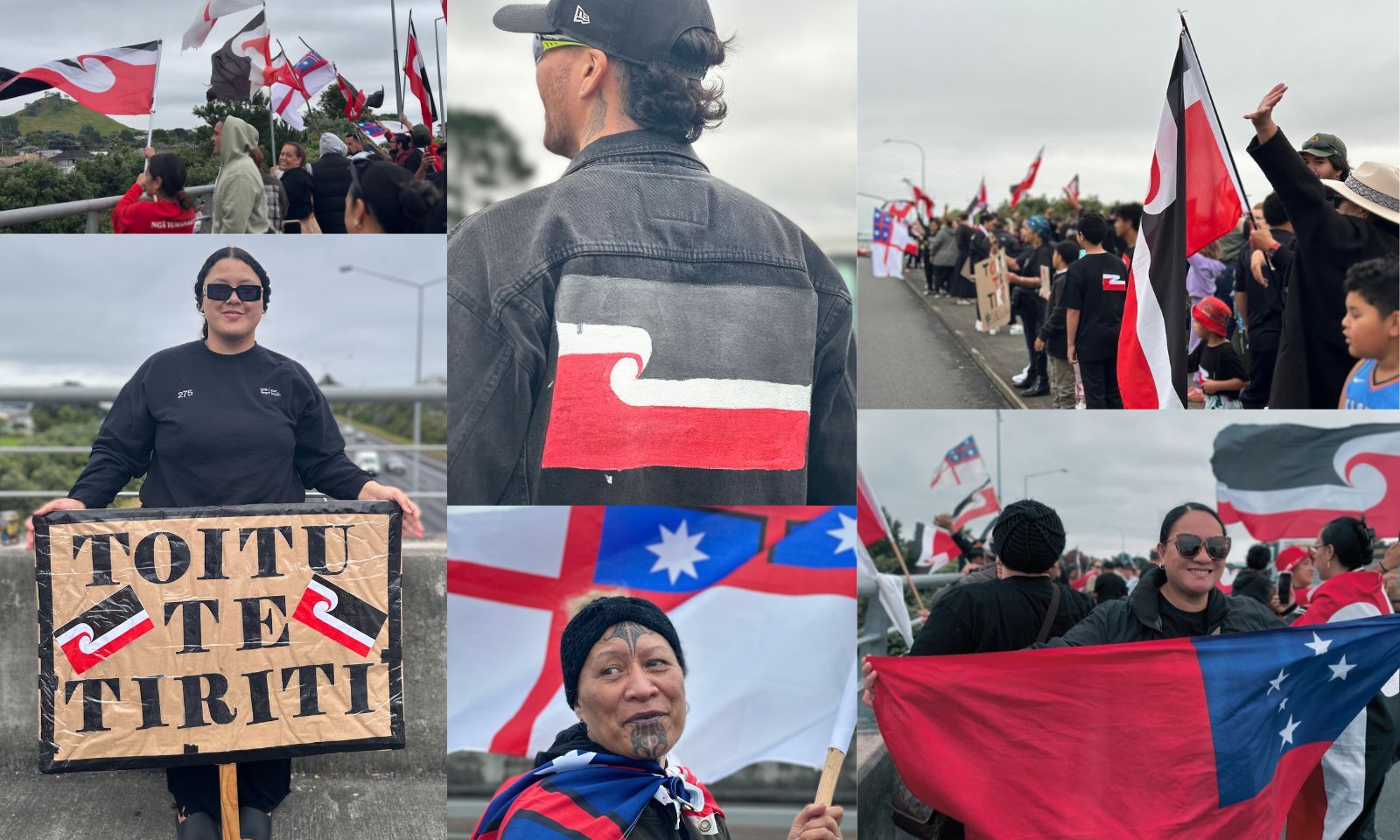
Moments in time on Māngere Bridge. Photo/Pmn News/Atutahi Potaka-Dewes
Striking images, footage and speeches that captured glimpses of the nationwide stance have flooded social media and drone footage of the Māngere bridge activation has reached almost 130k viewers.
Labelled as the Nationwide Activation Day, Te Pāti Māori posted to their socials encouraging Tangata Whenua and Tangata Tiriti to “join the revolution” and take action against the government's proposed Treaty principles bill, scaling back the use of te reo Māori in public services, and scrapping the Māori Health Authority.
Supporters were encouraged to engage within tikanga (correct protocols) by remaining peaceful, respectful, and of good vibes.
Also feeling elated and supportive of kaupapa (issues) was South Auckland artist and wrestler Michel Mulipola a.k.a The Bloody Samoan, who helped lead a convoy along State Highway 1 from the Bombays to Māngere.
“It was kinda nice to be the reason for the traffic rather than stuck in it."

Brown Buttabean Motivation, Te Pāti Māori MP for Tāmaki Makaurau and The Bloody Samoan vehicles head the pack along State Highway 1. Photo/Supplied
Mulipola says he and Brown Buttabean Motivation founder Dave Letele were side-by-side guiding the entire northbound traffic at a steady 10 km/hr pace.
"Tagata Moana were stepping up for our Māori brethren, we are tauiwi [non-Māori/foreigner] here in Aotearoa and so it’s only right that we stand up for our cousins of the moana.”
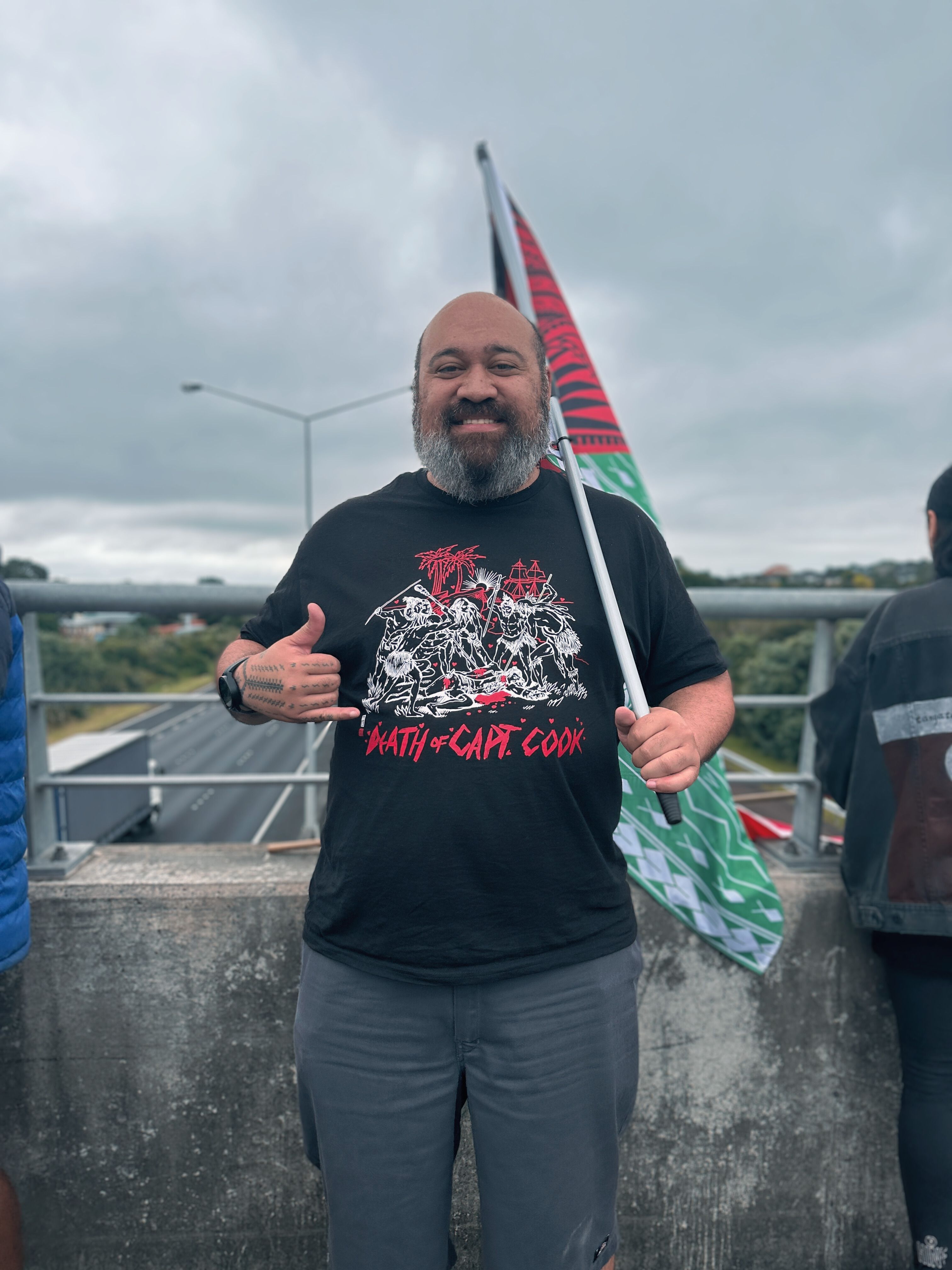
Cultural advisor to Disney was on of the leading cars in the State Highway 1 convoy. Photo/PMN News/Atutahi Potaka-Dewes
Māngere locals, husband and wife Simba Hewitt (Tuloto/Togafuafua/Tulaele - Samoa) and Te Pūtōrino Virk (Ngāti Manu/Te Ahiwaru/Ngāti Kahu) say they came out to support the indigenous people of Aotearoa.
Hewitt believes it's all about brown pride.
"I'm brown, everyone's brown, and we're here for the brown people. It's for the people"
Virk says activism is embedded in her whakapapa (lineage) and her other half reflects a gentler soul.
"I said to him, 'I know you're a gentle giant but I come from a staunch line of protestors and it would be awesome to see the gentleness that's been dormant in our giants'.
"We all come from Polynesia, we're fighting for Polynesia and with Polynesia and we will always be here alongside Polynesia."
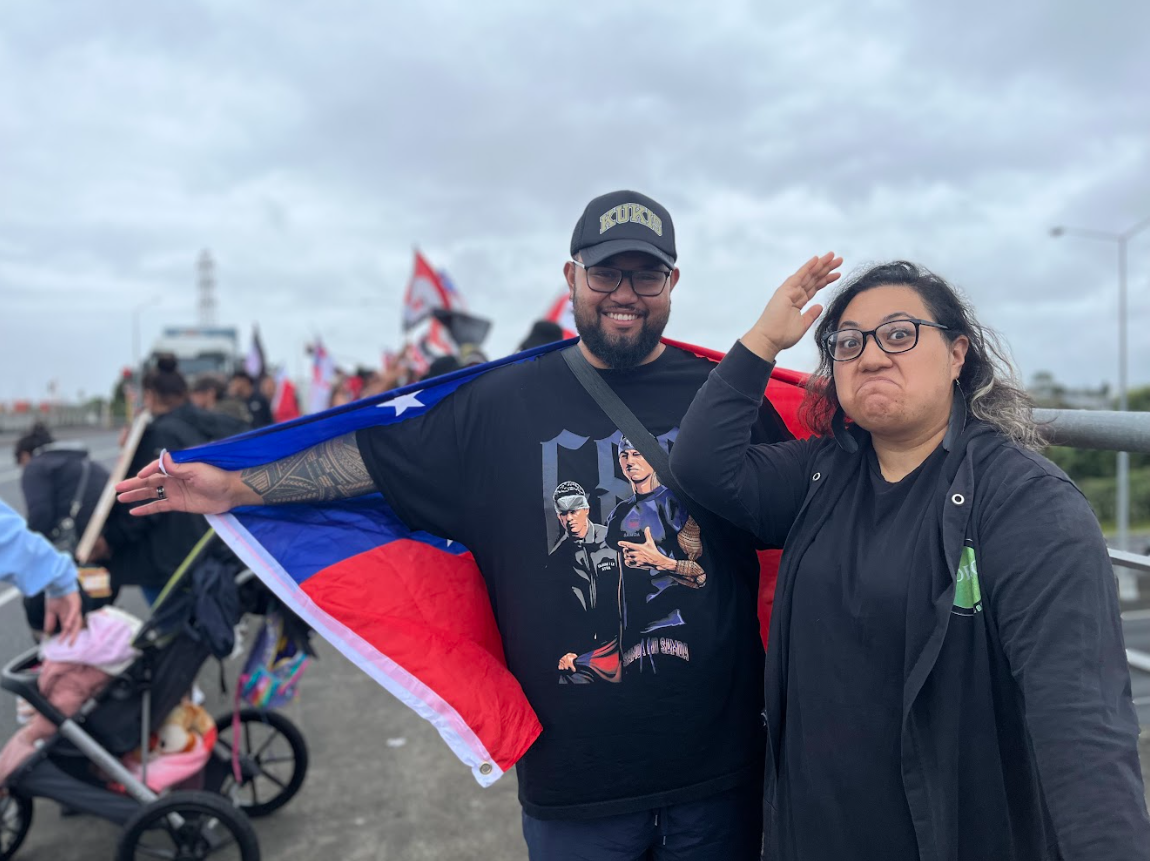
Samoan Simba Hewitt and Māori Te Pūtōrino Virk say the protest is for all Pacific peoples. Photo/Supplied
Proud South Auckland local Candice L'amour Luke (Ngāti Kahu, Te Rarawa, Ngāruahine) says the coalition government is erasing Māori as a people.
"We are the indigenous people of Aotearoa and I feel, no actually I know that the policies that the coalition has brought out are detrimental to the health and well-being of Māori and for our country as a whole."
Luke says hard work has gone into having te ao Māori recognised and hopes that forward momentum isn't in vain.
"It's kinda like we've gotten so far just to get knocked off the pedestal and you know, it's not even a pedestal. We're only just getting there, we're only just seeing improvements in health and well-being and our whānau are only just starting to come out of poverty in a lot of cases.
"And it's just knocking us right back to 100 years ago."
Luke says the activations have been true to their intentions of peace, and being whānau and mokopuna-oriented (grandchildren/future generation), as Māori voices need to be heard so the rest of the country can get on board.
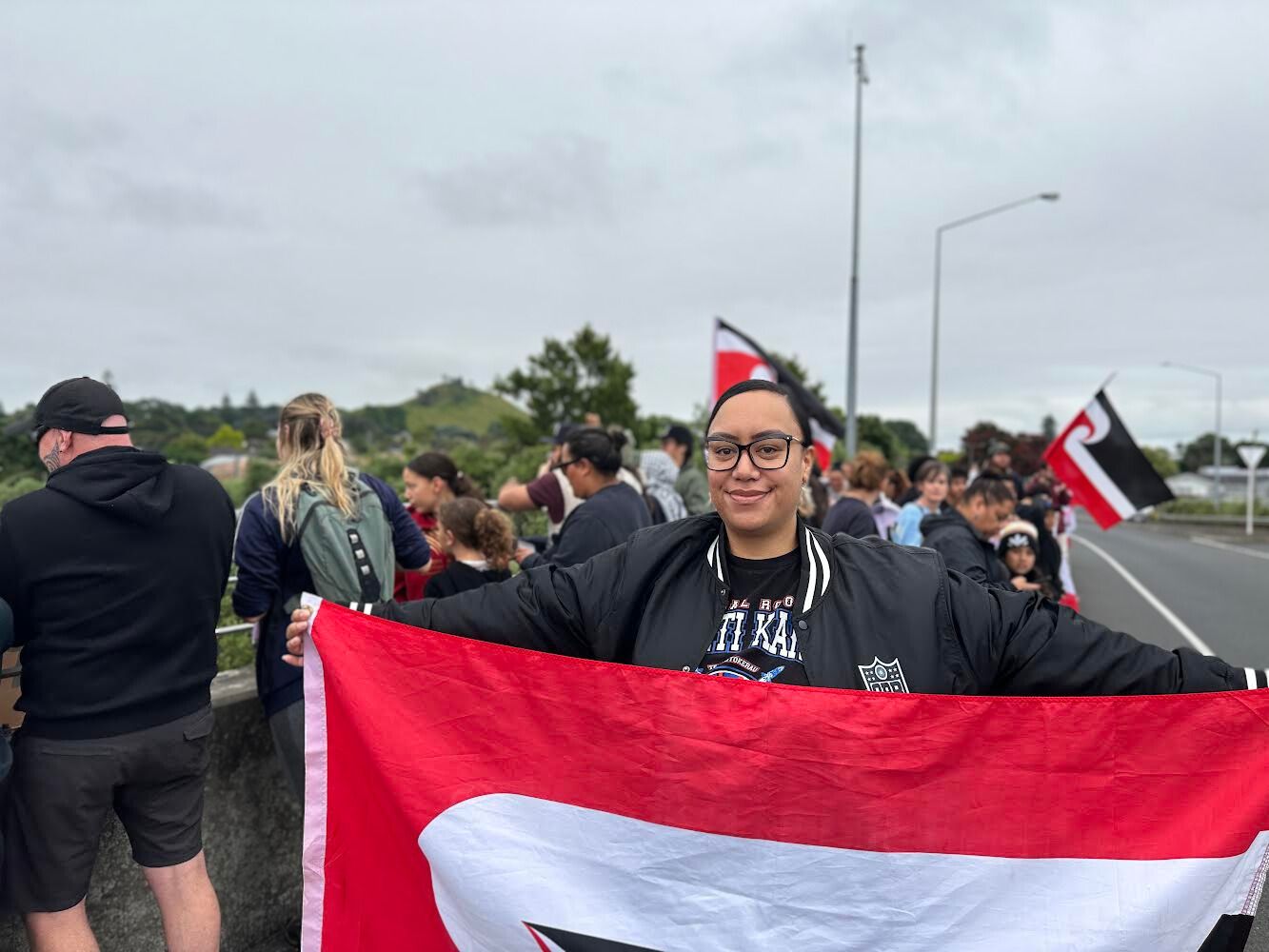
Candice L'amour Luke hopes the Toitū Te Tiriti movement gains more support. Photo/PMN News/Justin Latif
Artist and activist of Pacific and Māori heritage, Amiria Puia Taylor (Malie - Samoa, Atiu/Aitutaki/Rarotonga - Cook Islands, Ngāti Te Ata Waiohua, Ngāti Tipa ki Te Puaha o Waikato) says these demonstrations are all about being community-led.
"First and formost it's always about taking care of our people, not all of us could make it to Bombay or Hobsonville. So within our own means and capacity this is what we could do, which was be who we are and we learnt that from our kaupapa Ihumātao and our other protections around our taiao [environment]."
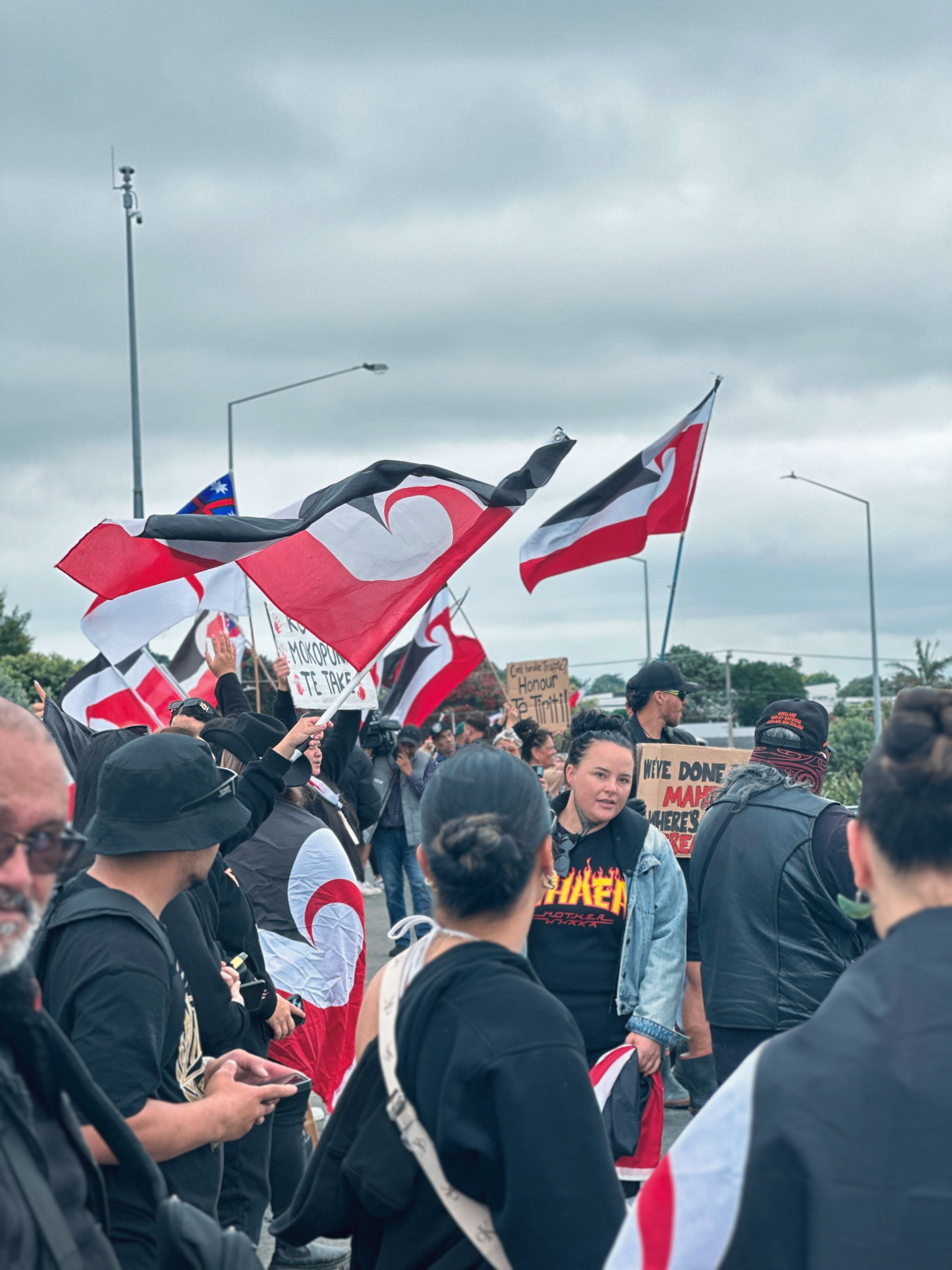
Tino Rangatiratanga flags worn and flown symbolising unity and purpose.Photo/PMN News/Atutahi Potaka-Dewes
Even with the growing interest and stronger allegiances with today's Pacific diaspora and Tangata Whenua, questions are rising about how there can be more Pacific presence and support.
Some protestors made comment that if te reo Māori is under attack now, Pacific languages are next and the stance for acknowledgement is the same for both Māori and Pacific people.
Puia Taylor says the answer is simple - if Aotearoa is your home, protect it.
"If you choose to live here in Aotearoa, this is your kāinga [home]. No matter who you are are, or where you're from ... this is your home and it's your right to protect it. Te Tiriti o Waitangi is the one document that keeps us all safe."
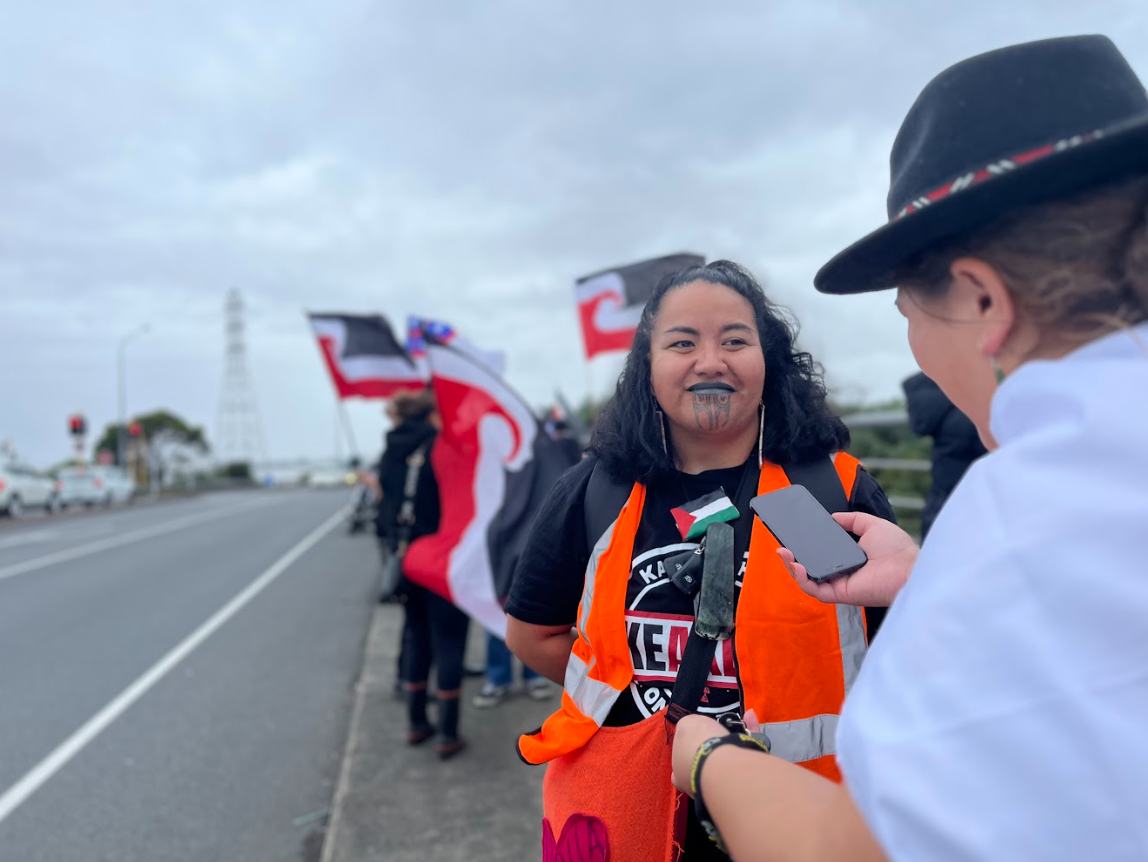
Amiria Puia Taylor says Aotearoa is home to all who call it that and everyone needs to pitch in to protect it. Photo/Supplied
Puia Taylor says the activation is about recognising and celebrating heritage, history, traditions and culture of all people of Te Moana-nui-a-Kiwa (the Pacific Ocean).
She pays homage to the soldiers from Niue, Samoa, Tokelau, and Cook Islands who made sacrifices and volunteered for WWII and says today's battle may be different but it is in respect to our ancestors' fight.
"Our people sacrificed themselves, their shoes and feet etc to come here for a better life within the land of milk and honey and when they got here all they got was false promises.
"So for us with this new government we've got a huge opposition and I'm not scared of it, I don't think any of us should be scared of it ... it's an opportunity for all of us, ngā kiri katoa [all ethnicities] to celebrate who we are."